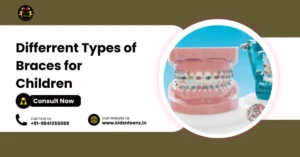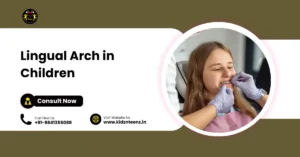Thumb sucking is natural for little kids. But if it continues too long, it can cause dental problems, speech delays issues, and even low confidence. That’s why knowing the 10 Ways to Wean a Child Off Thumb Sucking early can really help. In this blog, we’ll walk you through easy, gentle ways to help your child move away from thumb-sucking, when to seek help, and how dentists can support you. Let’s make this a smooth journey together!
10 Ways to Wean a Child Off Thumb Sucking
Thumb sucking is one of those habits that feels harmless at first, but if it goes on for too long, it can cause trouble with your child’s teeth, speech, and even their confidence. Many parents wonder what is the best way to help without causing stress. The good news is, you don’t have to be strict or harsh! With a little patience, love, and smart steps, you can guide your child gently. Here are 10 Ways to Wean a Child Off Thumb Sucking that actually work — and can make the process smooth and positive for everyone.

1. Positive Praise
Cheer for small wins! Praise your child whenever they are not sucking their thumb. Positive words make a huge difference.
- Celebrate small milestones.
- Stay consistent.
- Make them feel proud.
Remember, encouragement works better than scolding!
2. Use Gentle Reminders
When you see them sucking, gently remind them to stop.
- No yelling or punishing.
- Just a soft word or a loving touch.
A kind reminder helps them become aware without feeling bad.
3. Offer Substitutes
Give your child something else to hold, like a soft toy or blanket.
- Comfort objects can replace the thumb.
- Keep one handy during stressful times.
This gives their hands something else to do!
4. Identify Triggers
Find out when they suck their thumb the most.
- Stress? Sleepy? Bored?
- Help them deal with those feelings in healthier ways.
Knowing triggers is key to success.
5. Create a Reward Chart
Make a fun chart where they earn stickers or small rewards.
- Visual tracking motivates kids.
- Give rewards after small periods without thumb-sucking.
Kids love seeing their progress!
6. Keep Their Hands Busy
Involve them in activities that need two hands like drawing or playing blocks.
- Busy hands = no thumb free for sucking.
- Keep them engaged often.
Crafts and coloring work wonders!
7. Talk About It
Explain why thumb sucking isn’t good for them anymore.
- Simple, gentle conversations help.
- No blaming or scary stories.
Kids understand more than we think.
8. Use Thumb Covers
You can buy special thumb guards or use bandages.
- Makes sucking less comfortable.
- Only use if your child agrees.
It’s a gentle nudge to break the habit.
9. Nighttime Help
Kids suck thumbs in sleep too.
- Cover hands at bedtime.
- Give them a stuffed toy to hold.
Nighttime is the hardest but also most important to watch.
10. See a Dentist
Sometimes professional help is needed.
- Dentists offer habit-breaking appliances.
- They can guide you through the process gently.
Kids get extra encouragement from friendly dental visits!
Why Do Some Children Suck Their Thumbs?
Thumb sucking is one of the most common self-soothing habits among children. It often starts early in life and can persist into later years for various emotional or behavioral reasons. Understanding what is the cause of thumbsucking at age of 6, when does thumb sucking start, and easy ways to stop thumb sucking helps parents guide their children toward breaking this habit gently and effectively.
When Does Thumb Sucking Start?
- Begins before birth: Many infants are seen sucking their thumbs in ultrasound scans. This instinct starts in the womb as a natural reflex that comforts them and helps them learn to feed.
- Continues during infancy: After birth, babies often continue thumb sucking because it brings a sense of security. It mimics the soothing feeling they get while breastfeeding or bottle feeding, helping them calm down or fall asleep.
- Peak during early childhood: Most children engage in thumb sucking up to ages 2–4. It becomes a comfort mechanism during moments of stress, boredom, or tiredness. However, most kids gradually stop as they develop other coping methods.
What Is the Cause of Thumbsucking at Age of 6?
- Emotional comfort or anxiety: If thumb sucking persists at age 6, it’s often linked to emotional stress, insecurity, or transitions like starting school, sibling rivalry, or parental absence. The child uses thumb sucking as a familiar way to feel safe and relaxed.
- Habitual behavior: Sometimes, the habit simply lingers because it was never corrected early on. At this stage, it becomes an unconscious action, much like nail biting or fidgeting.
- Sleep association: Many children suck their thumbs before falling asleep. It becomes part of their bedtime routine, and breaking this association can be challenging without replacing it with another comfort cue.
- Underlying anxiety or attention-seeking: Persistent thumb sucking may also be a sign of low self-regulation or emotional dependency. In such cases, understanding the root cause—like bullying, separation anxiety, or lack of attention—is essential.
When to Intervene and Help the Baby Quit
- Intervene if it persists past preschool: Intervene if sucking persists past age four, especially during daytime. Clarify when does thumb sucking start to set realistic expectations.
- Watch for dental or speech changes: Address changes once permanent teeth erupt or speech changes appear. Start easy ways to stop thumb sucking with rewards now.
- Step in when it disrupts routines: If sucking disrupts sleep, feeding, or causes skin damage, intervene. Use easy ways to stop thumb sucking: reminders and substitutions.
- Identify triggers before acting: Consider triggers like stress, boredom, or transition times before interventions. Ask when does thumb sucking start at checkups, customize strategies.
- Escalate if self-weaning stalls: If self-weaning stalls after preschool, plan a structured, time-limited program. Introduce easy ways to stop thumb sucking before considering devices.
Easy Ways to Stop Thumb Sucking
- Positive reinforcement: Praise and reward your child for not sucking their thumb. Use sticker charts, small gifts, or extra playtime as motivation to stay thumb-free. Positive encouragement works better than punishment.
- Identify triggers: Notice when and why your child sucks their thumb—during stress, sleep, or boredom. Once you know the trigger, you can redirect their attention with a comforting toy, soft blanket, or engaging activity.
- Use gentle reminders: Instead of scolding, give subtle cues like holding their hand or offering a fidget toy when they start. Constant negative feedback can backfire and increase anxiety.
- Establish bedtime alternatives: Replace thumb sucking with bedtime routines like soft music, storytime, or cuddles. This helps break the emotional connection between thumb sucking and sleep.
- Consult a pediatric dentist: If the habit continues and starts affecting teeth alignment or jaw growth, professional advice can help. Dentists might suggest habit-breaking appliances or behavioral techniques tailored to your child.
- Maintain a calm environment: Reducing household tension and ensuring emotional security can naturally help stop the habit. Children often mirror stress, and a peaceful atmosphere encourages healthier coping methods.
Thumb sucking is a natural phase that most children outgrow, but when it persists beyond the age of 6, it may indicate emotional or behavioral roots. The best approach is empathy, patience, and structured guidance rather than force. With consistent support, most children can overcome the habit without distress or long-term dental issues.
How Long Does Thumb Sucking Usually Last?
Thumb sucking is one of the most common and natural reflexes seen in infants. It typically begins early in life, and understanding when does thumb sucking start can help parents manage it effectively. Most babies begin this habit in the womb or shortly after birth as a self-soothing behavior. While it’s comforting and harmless in early years, prolonged thumb sucking can lead to dental or speech issues if it continues beyond a certain age.
Key Insights on Thumb Sucking Duration
- Early Beginnings: Many infants start thumb sucking as early as the prenatal stage. This instinctive act gives them a sense of comfort and security. Parents often wonder when does thumb sucking start — it’s often observable through ultrasound images, showing that the habit is entirely natural in early life.
- Typical Duration in Early Childhood: Most children reduce thumb sucking between ages 2 and 4 as they gain other comfort mechanisms like cuddling toys or interacting socially. Pediatricians generally note that if a child stops by age 4, there’s little to no impact on oral development. However, if thumb sucking persists after permanent teeth erupt (around age 6), parents should explore easy ways to stop thumb sucking to prevent misalignment or bite problems.
- Factors That Influence How Long It Lasts: Emotional triggers such as stress, fatigue, or anxiety can make children continue thumb sucking beyond the usual age. Understanding when does thumb sucking start also helps parents realize that it’s not always about habit—it’s about emotional comfort. Recognizing these triggers is vital to apply easy ways to stop thumb sucking like positive reinforcement or distraction techniques.
- Gradual Reduction Over Time: Many children naturally outgrow thumb sucking as they develop self-control. However, if the behavior becomes persistent, parents can implement easy ways to stop thumb sucking — such as setting gentle reminders, using reward charts, or providing soft alternatives like comfort blankets or chew toys. These non-punitive strategies work better than scolding or pressure.
- When Intervention Becomes Necessary: If thumb sucking continues after age 5 or affects speech and teeth alignment, a pediatric dentist may recommend mild behavioral therapy or dental guards. Professionals often educate parents on when does thumb sucking start to understand its developmental roots and teach easy ways to stop thumb sucking customized for the child’s comfort level.
In essence, thumb sucking is a temporary and self-limiting habit for most children. The key is knowing when does thumb sucking start and using supportive, easy ways to stop thumb sucking before it becomes a dental concern.
Ways to Motivate Your Child to Stop Thumb Sucking
Motivation is key! Kids do better when they feel excited about stopping.
- Set small goals like “no thumb for 10 minutes.”
- Reward after each success.
- Talk about how big kids don’t need thumb-sucking.
Understanding what is the cause of thumbsucking at age of 6 helps you plan better rewards and strategies. Easy ways to stop thumb sucking include praise, fun activities, and lots of hugs!
How Dentists Can Support the Process
Dentists are awesome teatmates in this journey! They offer advice and tools to help stop thumb sucking without pain or fear.
- Special appliances make thumb-sucking uncomfortable but not painful.
- Regular checkups show progress and encourage the child.
- They explain things in ways kids understand easily.
Understanding thumbsucking in adults psychology also teaches dentists why early help matters. Knowing when does thumb sucking start and working on it early keeps smiles healthy and happy!
Conclusion
Helping your child stop thumb sucking doesn’t have to be hard. With love, patience, and smart ideas, you can guide them gently. Now you know 10 Ways to Wean a Child Off Thumb Sucking and how to make the journey fun. If you need extra support, your child’s dentist is always ready to help! Keep it positive, and soon you’ll see a thumb-free happy smile. Remember, 10 Ways to Wean a Child Off Thumb Sucking can truly change your child’s life for the better!
Read also: Kids Early Crossbite Treatment




